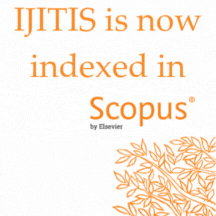Utilization of Mass I Rice Straw Ash (MRSA) in the Production of Eco-friendly Concrete for Sustainable Construction
DOI:
https://doi.org/10.15157/IJITIS.2023.6.2.1170-1185Keywords:
Mass I rice straw (MRS), Mass I rice straw ash (MRSA), Dry density, XRD pattern, Predictive models, Compressive strengthAbstract
Rice straws are the waste produced after the threshing of rice. This research considered the utilization of mass I varieties of rice straw ash to produce eco-friendly concrete. The mass I rice straw (MRS) used was gotten from the rice threshing floor in Odingene village, Akpugo community, Enugu state, Nigeria. The rice straw was calcined by open burning at 535 °C to produce the mass I rice straw ash (MRSA). The materials used were preliminary tested to determine their physical properties. The mass I rice straw ash was subjected to chemical composition and XRD tests. The mass I rice straw ash was used to partially replace OPC at 0, 5, 10, 15, 20, and 30%, respectively. The fresh property test, wet and dry density test, and cube strength test were done for all replacement levels. Using the slump test, the concrete's workability was evaluated. Cube strength was determined on the 7th, 14th, 21st, and 28th day of curing in water. For this research, 72 concrete cubes were cast. From the investigation, the percentage increase in mass I rice straw ash replacement decreased the concrete's workability. The samples' compressive strength varied directly with the curing age and inversely with mass I rice straw ash replacement, though at a different rate, with the CC0,100 gaining the highest strength. The CC5, 95, and CC10, 90, attained 6.1% and 2.2% more strength compared to the design strength at the 28th day of curing, respectively. While the CC15,85; CC20,80; and CC30,70 attained 17.3%, 28.9%, and 67.6% lower strength compared to the design strength at 28th day of curing, The result further revealed that both the wet and dry densities of concrete were significantly affected by a higher replacement percentage of MRSA. This study has revealed that 5–10% mass I variety of rice straw ash (MRSA) can be utilized to replace OPC to produce eco-friendly grade 25 concrete for sustainable construction. The developed models were tested and found to be adequate.
Downloads
Published
How to Cite
Issue
Section
License
Copyright (c) 2023 International Journal of Innovative Technology and Interdisciplinary Sciences

This work is licensed under a Creative Commons Attribution 4.0 International License.








